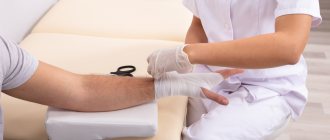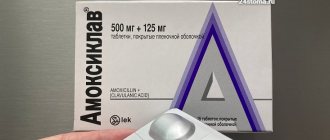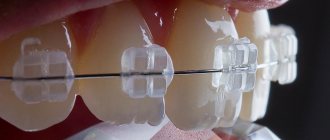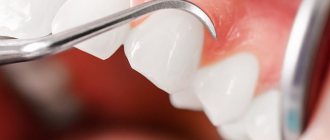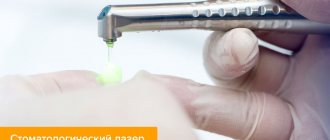To help the body cope with the inflammatory process, anti-inflammatory drugs are prescribed. They are also called non-steroidal or non-hormonal. The short name is NSAID. The first known anti-inflammatory drug is Aspirin or acetylsalicylic acid.
Such drugs have many side effects, so their uncontrolled use is not permissible. Classic NSAIDs have side effects on the digestive organs, cardiovascular and nervous systems.
New generation non-steroidal anti-inflammatory drugs simultaneously have anti-inflammatory, analgesic and antipyretic effects.
How and why does the inflammatory process occur in the human body?
Inflammation is the body's defense method, allowing it to eliminate germs, harmful substances and dead cells. The inflammatory process can begin due to many reasons, including infections caused by bacteria and viruses, the action of chemicals, and also as a result of foreign bodies entering the body.
Inflammation can be acute or chronic. In the chronic form it occurs more slowly and for a long time. The main symptoms of the inflammatory process are redness, swelling, pain, fever and loss of certain functions.
Use of NSAIDs for musculoskeletal pain
Diseases characterized by the development of musculoskeletal pain (MSP) represent one of the main medical and social problems. This pathology is a source of suffering and social losses for millions of people, one of the common causes of short-term or permanent disability and a serious burden for the state and society, which are forced to spend huge amounts of money on diagnosis, treatment and care of patients. Patients need adequate medical care, first of all, quick and complete pain relief [7].
MPS is extremely common and accounts for approximately one third of all acute and chronic pain syndromes. Their localization is very diverse, but most often it is the lumbar and sacral spine, lower leg, shoulder girdle and neck. Moreover, in half of patients with MBS, pain occurs in several areas simultaneously [8].
MPS is characterized by both acute and chronic pain syndromes. The initial pain that occurs is usually acute, sharp, intense, and it goes away when the irritant is eliminated and the damaged tissue or organ is restored. This pain warns the body of danger, performs a protective function and ensures the activation of systems aimed at eliminating the damaging factor. In some cases, pain does not occur in response to damage: often it has already been eliminated, but the pain remains, no longer being a protective, but a damaging factor in the body. Chronic pain often becomes an independent disease, being the only symptom that bothers the patient for a long time, and often its cause cannot be determined. Chronic pain affects an average of 15–20% of the population, and most often this pain is associated with musculoskeletal problems [9].
Adequate medicinal pain relief not only alleviates the patient’s condition, but also facilitates a faster return to his usual level of daily activity. The key direction of symptomatic and pathogenetic treatment of back pain is the use of NSAIDs (Table 2) [10–12].
A feature of modern NSAIDs is the existence of a variety of dosage forms (tablets, suspensions), including for topical use in the form of ointments, gels, sprays, as well as suppositories and preparations for parenteral administration. However, their prescription requires a lot of attention and knowledge from the doctor in order to individually select an effective and safe remedy among many drugs [13].
NSAIDs for topical use
Since the use of NSAIDs orally or parenterally is often accompanied by the development of side effects and complications in patients, more attention is currently focused on topical NSAIDs. The ability to use drugs locally (externally) allows the active substance to be delivered as close as possible to the source of pain without causing systemic effects, which significantly reduces the risk of side effects and complications.
The transdermal route of administration has many advantages over other forms of drug delivery:
reduces the risk of side effects due to the fact that the drug reaches the bloodstream, bypassing the gastrointestinal tract and the first passage through the liver;
expands the possibilities of using drugs with a short half-life as a result of their continuous long-term intake into the patient’s body;
allows you to reduce the daily and course doses of the drug due to a decrease in the metabolism of the drug when passing through the liver;
provides the opportunity to use medications that irritate the gastric mucosa;
ensures painlessness and ease of use of medications. Patients can self-administer medications at home (as opposed to nursing-assisted injections and intravenous administration) [14].
Treatment options for chronic pain have expanded with the development of transdermal therapeutic systems (TTS), which provide a simple, convenient, and safe dosage form of drug administration. Several classifications of TTS can be distinguished. S.S. Khmelevskaya et al. propose to use a classification similar to the classification of ophthalmic drugs of this type:
matrix (with drug release through diffusion);
erosive (drug release is carried out by diffusion with simultaneous erosion of the therapeutic system);
reservoir (with diffusion of the active ingredient through membranes), osmotic mini-pumps.
Literary sources also provide another classification of TTS:
TTC - medicinal films (DP).
TTC - ointments, gels, pastes.
TTC - discs, patches [15].
When using a patch form of TTC, the goal of prolonged action of the drug is achieved. In this case, the dose and absorption surface are set quite accurately, which significantly distinguishes them from ointments, creams, and gels [16].
The use of TTS has many undeniable advantages and obvious advantages over other dosage forms:
makes it possible to strictly control the total concentration of the active substance in the patient’s body and its delivery rate;
ensures a more uniform supply of the drug, thereby significantly reducing fluctuations in the concentration of the drug in the blood and associated adverse reactions, which is especially important for drugs with a low therapeutic index;
allows you to increase the duration of exposure to medicinal substances that have a short half-life due to continuous long-term entry into the body;
ensures prolonged action of the drug, which reduces the cost of treatment and reduces the frequency of administration;
is the most non-invasive method of drug delivery;
makes it possible to more correctly dosage the drug; at the same time, the risk of overdose is minimized, since the entire dose of the drug is outside the body, and treatment can be interrupted if necessary;
facilitates the process of drug therapy, preventing the possibility of missing a drug dose, especially when long-term treatment of patients with chronic diseases is necessary [17].
TTC delivery of NSAIDs is widely used in foreign practical medicine.
In Russia today, the State Register of Medicines lists 35 trade names of medicines produced in the form of TTC, mostly foreign-made. Of these, only 4 are NSAIDs: 3 TTC containing diclofenac, and 1 TTC containing ketoprofen.
Indications for the use of anti-inflammatory drugs
- Rheumatic diseases (rheumatic fever, ankylosing spondylitis, rheumatoid, gouty and psoriatic arthritis, Reiter's syndrome).
- Non-rheumatic diseases of the musculoskeletal system (myositis, tendovaginitis, household and sports injuries, osteoarthritis).
- Neurological diseases (sciatica, neuralgia, lumbago, sciatica).
- Renal and hepatic colic.
- Pain syndrome of various origins, including abdominal pain, headache and toothache, pain after surgery.
- Fever.
- Dysmenorrhea.
- For the prevention of arterial thrombosis.
What are the contraindications?
- Ulcerative lesions of the gastrointestinal tract in the acute stage.
- Severe renal and liver dysfunction.
- Individual intolerance to the main active ingredient and auxiliary ingredients.
- Pregnancy and lactation.
- Individual intolerance to drug components.
- Children under 2 years old.
Anti-inflammatory drugs should be prescribed with caution to people suffering from bronchial asthma, as well as people who have already experienced adverse reactions when taking medications. For patients with arterial hypertension or heart failure, NSAIDs are chosen that have the least effect on renal blood flow. Elderly people are prescribed the minimum effective doses of NSAIDs in short courses.
Side effects of NSAIDs
When discussing the use of NSAIDs, it is necessary to take into account the problem of side effects.
The structure-modifying properties of NSAIDs appear when they are taken over a long period of time in therapeutic doses. In this situation, the risk of developing complications specific to this class, mainly in the form of disturbances in the structure and function of the gastrointestinal tract and cardiovascular system (CVS), may become the main factor limiting the therapeutic potential of these drugs (Table 1) [5]. The most important complications include the so-called NSAID gastropathy (pathology of the upper gastrointestinal tract, manifested by clinically significant ulcers, bleeding and perforation) and cardiovascular accidents (myocardial infarction, ischemic stroke and sudden coronary death). Among these complications, NSAID-associated gastropathy has the greatest practical importance. This is a serious medical and social problem given the widespread use of NSAIDs [6].
Nephrotoxicity is the second most important group of adverse drug reactions of NSAIDs, which develops as a result of systemic non-selective suppression of prostaglandin synthesis, which leads to narrowing of the lumen of blood vessels and a decrease in renal blood flow. As a result, renal ischemia quickly develops, the glomerular filtration rate decreases, and the volume of diuresis decreases. There is a disturbance in water-electrolyte metabolism, which causes water retention in the body, edema, hypernatremia, hyperkalemia, the level of creatinine in the serum increases, and blood pressure rises. Hepatotoxicity with NSAIDs is rare. According to various estimates, in 1–4% of cases there is an asymptomatic moderate increase in the level of liver transaminases (ALAT, AST) [6].
Types of anti-inflammatory drugs
Modern medications cope with inflammation of any nature and have a long-lasting effect. They are often prescribed when pain needs to be relieved.
- Hormonal drugs . They have a much stronger effect than non-hormonal ones. The basis of such drugs is cortisol. They act on the principle of local immune suppression. And at the same time, such drugs have many more contraindications and side effects.
They are prescribed for severe skin allergies, rheumatoid arthritis, vascular inflammation, hepatitis, and inflammation of skeletal muscles.
- Combined means . These medications include combinations of several components. Thanks to this, the therapeutic effect is greatly increased.
- Nonsteroidal drugs . These drugs act selectively on types of cyclooxygenase, inhibiting their activity. COX is responsible for the creation of biologically active components. Due to the suppression of COX activity, the amount of these substances in tissues decreases and inflammation disappears.
How to treat inflammation of the appendages: methods of folk and traditional medicine
Therapy is aimed at destroying the infection, restoring tissues affected by the disease and relieving pain. Inflammation of the appendages in women is treated not only with antibiotics, but also with drugs that support the immune system.
Drug therapy
Medicines are selected taking into account the individual characteristics of the patient and the presence of allergies. The following antibiotics are usually prescribed:
- Gentamicin;
- Claforan;
- Cephobid;
- Cefazolin;
- Ciprofloxacin;
- Doxycycline;
- Ofloxacin;
- Lincomycin.
For effective treatment, specialists use the complex use of the above remedies.
In addition to antibiotics, medications that have an anti-inflammatory effect are prescribed:
- Diflucan;
- Ibuprofen;
- Orphtofen.
To treat inflammation of the appendages in women, antihistamines are used, which reduce the risk of allergic reactions. Popular products in this category are Zodak, Zyrtec, Erius.
Surgery may be required at the initial stage of the disease. They resort to surgery in the following cases:
- adhesions in the pelvic organs;
- formation of a purulent cavity;
- loss of patency of the fallopian tube.
Therapy in the above cases is carried out in a hospital setting. It is impossible to cope with the disease at home.
Treatment of inflammation of the appendages in women with “grandmother’s recipes”
Traditional medicine helps stop the development of inflammation and the spread of infection. But they are not able to cure the patient, since only antibiotics can kill pathogenic microorganisms.
The following recipes are used in the treatment of adnexitis:
- For treatment, a decoction of a mixture of roots is used - Chernobyl, elecampane, peony, buckthorn and burnet. Two tablespoons filled with half a liter of hot water is enough. The broth is boiled over low heat for about half an hour, cooled and filtered for the same amount of time. Take half a glass 3-4 times a day. To improve the taste of the healing drink, honey is added. This bee product helps strengthen the immune system and gives the body strength to fight infection.
- They take a medicinal plant such as boron uterus and grind its dried leaves. A tablespoon of medicinal herb is poured with boiling water, one glass is enough. Leave to infuse, filter after two hours. The resulting decoction is taken in a third of a glass. It is recommended to consume 30 minutes before meals three times a day. The duration of the course is one month. After completing therapy with a decoction of boron uterus, it is recommended to drink an infusion of Yakut field grass for two months. To prepare the drink, add a tablespoon of dried herb to a glass of boiling water. Infuse and filter after four hours. A single serving is one teaspoon. The decoction is taken 3-4 times a day.
- Dried, pre-crushed flowers of coltsfoot, centaury and sweet clover are taken in equal proportions. Add a glass of boiling water to the resulting mixture and leave to infuse. After an hour, filter the broth using gauze. The cooled medicine is taken half a glass twice a day. Treatment with this method involves abstaining from sexual activity for the full course.
How to take anti-inflammatory medications correctly?
First you need to carefully read the instructions. The drugs must be prescribed by the attending physician and the optimal dose and course of treatment determined. To protect the stomach, tablets should be taken with a sufficient amount of clean water.
Under no circumstances should you mix medications with alcohol. This will further affect the functioning of the stomach.
You can buy all drugs for the treatment of inflammatory processes in the network of state pharmacies “Provincial Pharmacies”. We provide medicines with a state quality guarantee. There is a pick-up system and home delivery when ordering drugs online.
What are NSAIDs
The purpose of non-hormonal anti-inflammatory drugs is to reduce and eliminate inflammation in the joints. The absence of hormones makes the effect of the medications quite mild and eliminates serious side effects. However, this is only true if the treatment of arthrosis or osteoarthritis is carried out under the supervision of a specialist.
What is the principle of action of non-steroidal anti-inflammatory drugs? How to take them correctly? Experienced doctor, chiropractor Anton Epifanov says:
